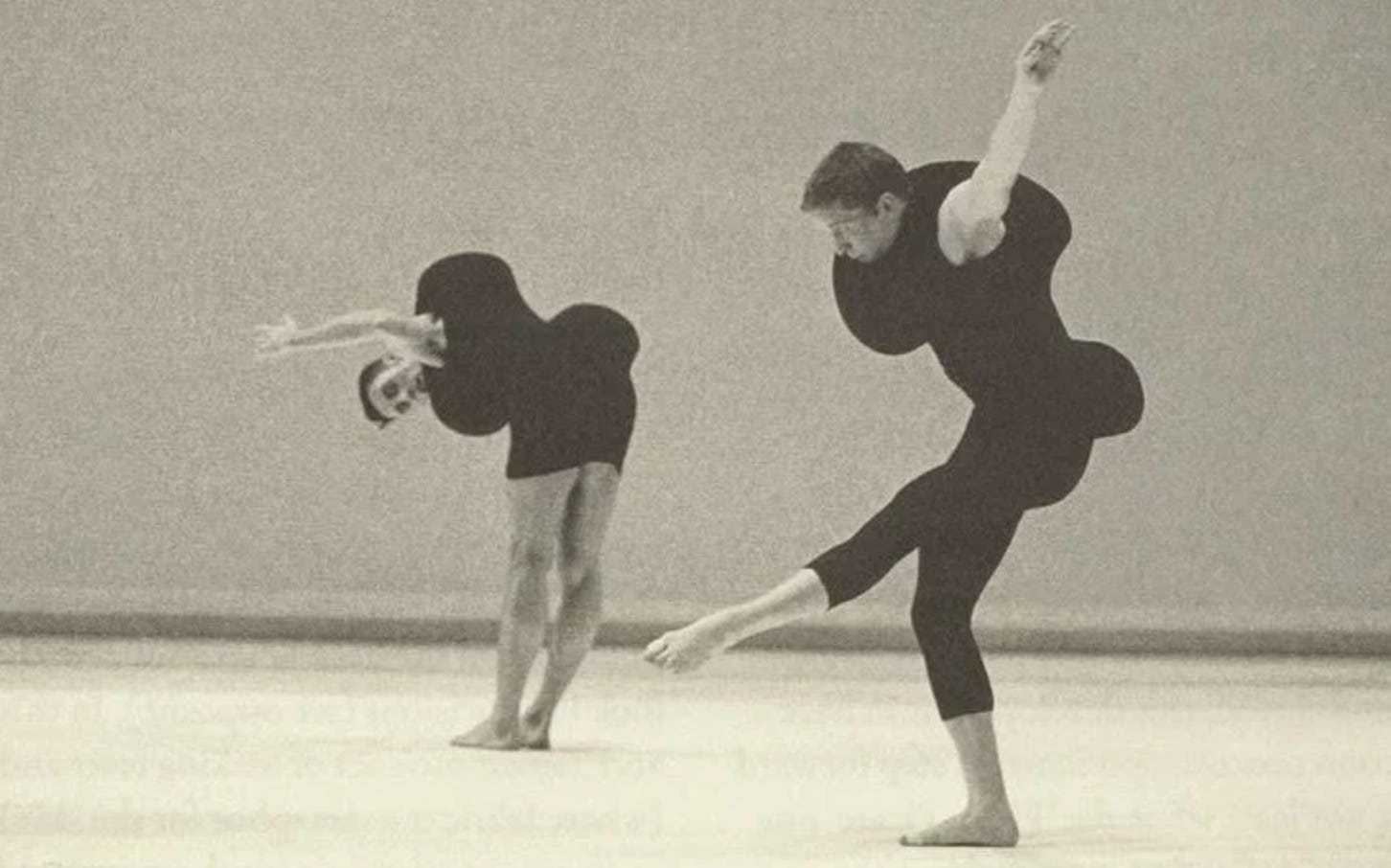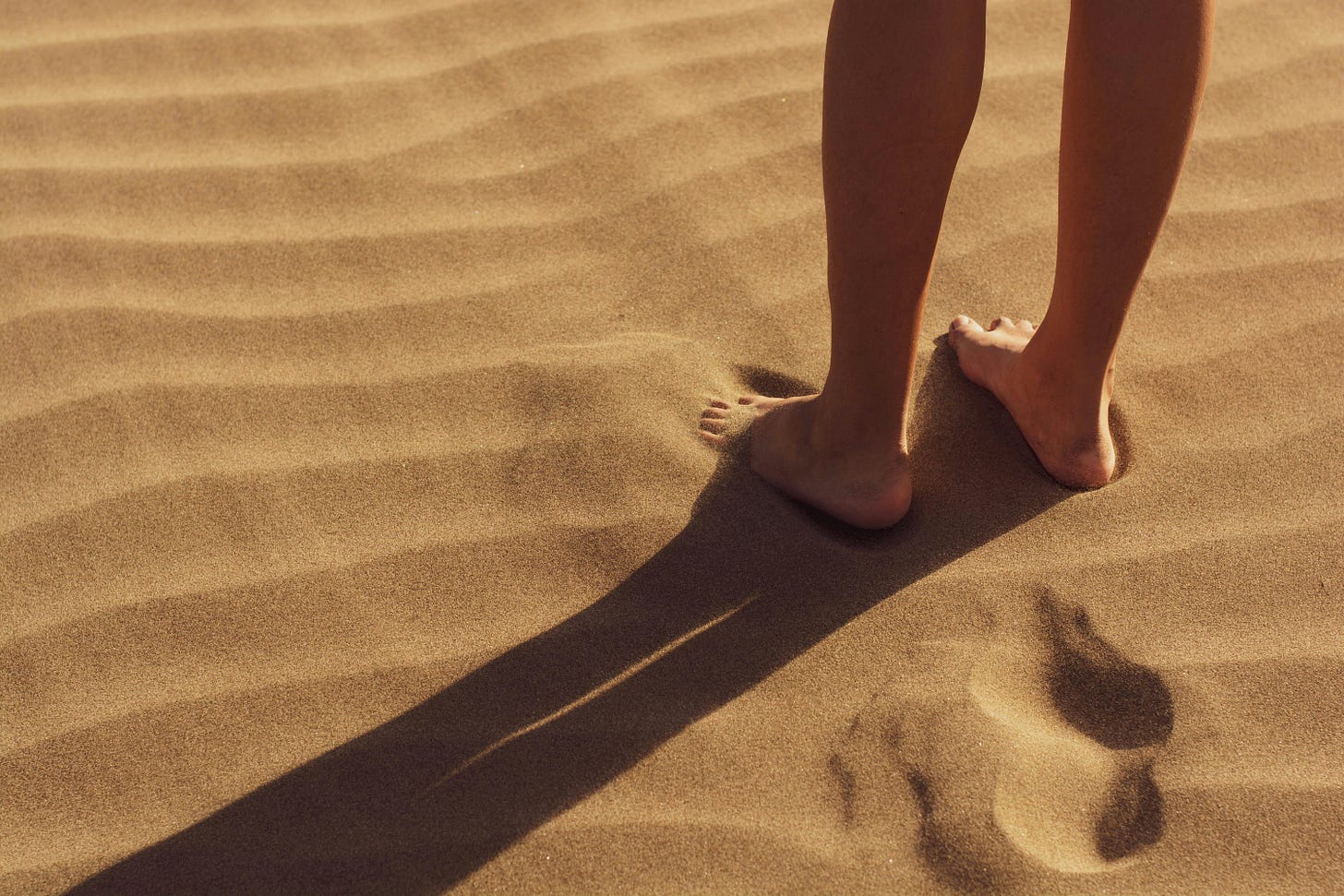🍄 The Future is Already in Your Bones
Dispatches from the Embodied Century
🍄 AudioDose Alice on Sonic Mushrooms: Listen to Quantum Mind
🎧 Alice podcasts
📘 Alice books
Somewhere between the brittle scroll and the endlessly scrolling feed, there is a truth we keep missing: the most enduring archive we have is not the cloud—it’s the body. If human knowledge can disappear so easily, how is it that cultures without written records have endured for millennia? How did the hunting stance of a Paleolithic tracker, the grip of a master glassblower, or the spiraling rhythm of an Ifa divination survive across centuries, without ink, without servers, without the false permanence of “Save As”? Hello, We’re Alice and we are always in a state of wander.
The answer is in the muscle, the gesture, the repetition.
There is a type of knowledge that is not captured by language or mathematics. Because of this elusive character, we can see it only by its action. It is in what Polymath, Michael Polanyi called the tacit dimension, that vast territory of knowing more than we can tell. It’s in the embodied networks of “bits” that click into place only through doing, only through feeling. The Japanese tea master’s hand. The Maasai warrior’s step. The carnival dancer’s pivot. The capoeirista’s arc.
Your body is an archive.
Not metaphorically,
literally.
It contains the residues of every movement you’ve learned, every physical skill your ancestors once enacted.
You can’t screenshot a soul
We are living in an illusion of perfect memory, terabytes stored, “content” captured from every possible angle. But digital permanence is a brittle promise. Files corrupt. Formats vanish. Servers burn. The flood of recorded information is drowning the very thing it was meant to preserve: lived transmission. And here’s the urgency: Long-term cultural sustainability isn’t just about saving data, it’s about saving ways of being. You can’t store the precise weight shift of a flamenco turn in a PDF. You can’t back up the warmth in a griot’s voice on a hard drive and expect it to carry the same force a generation later.
Cultures survive when values are
physically enacted and felt,
not just read about.
Indigenous knowledge systems, African diasporic movement traditions, martial arts, seasonal festivals, and traditional healing rituals endure because they are redundantly repeated, body to body, event to event, across decades and centuries.
Key currents from the body archive
The Making and Knowing Project: A reminder that there was a time when “making” was “knowing,” and the only way to understand a recipe for molten bronze or a botanical dye was to try it, feel it, fail it, and try again.
The Tacit Dimension, Polanyi’s quiet bombshell: We can know more than we can tell. Expertise is built in places language can’t reach. Tacit knowledge is not simply “what can’t be put into words,” but the rich, often unconscious expertise gained through experience and expressed in pattern recognition, perceptual cues, embodied skills, social awareness, and metacognition. It explains how a doctor can instantly sense a patient is ill, a naval officer can distinguish a threat on radar, or a cook can feel the exact moment to stop stirring fudge after decades away from the task. Drawing on thinkers from Ryle and Polanyi to Tversky, researchers have identified multiple forms, perceptual, conceptual, embodied, social, and metacognitive, each with its own dynamics and constraints. Unpacking these forms makes tacit knowledge visible, relevant, and essential for understanding how expertise develops, how it guides action without conscious deliberation, and how it can be better recognized, nurtured, and transmitted.
Tacit Knowledge Networks: The insight that embodied practices are not infinite combinations, they are constrained systems. Master a few “bits” and the whole comes alive.
The Body Archive: Dance, in particular, holds a special power to preserve entire worlds. The choreography of a culture is not ephemera, it’s encoded memory. The concept of the “body archive” reframes archives from static repositories into dynamic, living systems of memory and transmission, where embodied knowledge is preserved, renewed, and reactivated through movement. Dance is recognized not as ephemeral but as a medium that stores and transmits sensory, emotional, and cognitive experiences across time. Through kinesthetic memory, choreography becomes both a record and a means of activating history, with dancers, spectators, and re-enactments serving as co-archivists who carry and transform a work’s legacy. This embodied preservation exists alongside traditional documentation, but often holds unique authority—seen in the posthumous protocols of the Merce Cunningham Dance Company, revealing how the body itself is a site of cultural continuity, creative reinterpretation, and even political subversion.
When the body forgets, civilization ends
We are approaching a split in the road. Down one path lies a future where the body becomes an atrophied interface, eyes glazed at a screen while the muscles of culture waste away. Down the other is a future where movement, craft, and ritual are not quaint hobbies, but primary technologies for transmitting who we are.
The stakes are civilizational. If our archives are only digital, we inherit nothing in the hands, the voice, the gait. We lose the embedded values of sustainability, reciprocity, and belonging that come only from physically practicing them.
In a time when climate, migration, and political upheaval threaten the continuity of countless cultural practices, learning how to embody culture is a resilience strategy. It’s disaster preparedness at the civilizational level. The body doesn’t need power, doesn’t need broadband, doesn’t need an instruction manual, it only needs another body to pass it on.
What else we are wandering…
✋ Your body is an archive: Culture doesn’t just live in libraries or server farms—it lives in the flex of a wrist, the shift of weight, the muscle memory passed from one body to another. A tool can survive for millennia, but without the feel of its use, it’s a fossil. These practices move through time as fragile chains of touch and repetition, held together by a few essential “bits” that, once fixed, let the rest click into place. Teachers shape them with metaphor, tools sculpt them through constraint, and sometimes a single daring twist—like the Fosbury Flop—rewrites the form entirely. This is the knowledge we can’t write down, yet it survives, not in words, but in the living archive of the body. (from Aeon)
☕️ Embodied culture is the living pulse of daily life—the way habits, movements, and spaces shape who we are and what we value. It’s in the warmth of a mug held just right, the walk to the market, the satisfaction of cooking with local ingredients, or the pride in repairing instead of replacing. These acts are cultural imprints written into our bodies, linking personal values to shared norms, and showing that sustainable living is less an abstract ideal than a practiced way of being. Long-term success in fostering it requires understanding how values are physically enacted and felt, designing environments that encourage sustainable actions, transmitting practical skills, and creating social contexts where these embodiments are valued. A truly sustainable future is one where caring for the planet is not an idea but a lived rhythm, felt in the hands, the feet, and the flow of everyday life. (from Sustainability Directory)
🌎 Somatic Stories: Embodied knowledge carries the imprint of lived experience, wounding and resilience etched into bones, blood, and breath, and passes it from one generation to the next. What science calls epigenetics, we know as being human: the body remembers, holding trauma and joy, grief and endurance, until healing work transforms it into something generative. Guided by the elements, we learn to release pain, restore vitality, and reclaim the wisdom that our bodies are earth body, inseparable from the land, waters, and ancestors that shaped us. Through such somatic transformation, future generations inherit less of the rage and grief that burdened their forebears, and more of the spaciousness, reverence, and freedom to move through the world in connection with themselves, their communities, and the living planet. (from Deep Times Journal)
The next time you learn something—
how to knead dough,
mend a seam,
whistle a tune,
balance on a beam,
tend a fire,
braid hair,
plant by the moon,
call the rain,
carve a flute,
gut a fish,
sharpen a blade,
weave a basket,
read the sky,
spin wool,
make ink,
tell a story in the dark,
or dance the step your grandmother knew—
pause and ask yourself:
Am I just storing this in my head,
or am I storing it in my body?
Because hard drives fail.
Clouds evaporate.
Archives burn.
And one day, when the grid goes dark,
the last server left running
might be the one made of flesh, bone, and breath.
Craving more?
📘 Alice in Futureland books
🎧 Alice in Futureland podcasts
Thanks for tuning in.
For more wanderings, become an Alice in Futureland subscriber—it's free.
Invite your friends to this mad tea party and let's see how many things we can learn before breakfast.
©2025 Alice in Futureland







